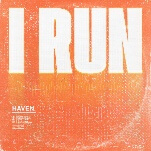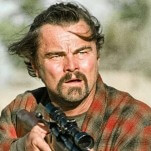Thing we were happiest to learn: There doesn’t appear to be a statute of limitations on finishing your work. Atari announced Combat 2 back in 1982, as a sequel to the classic-by-default game that came free with the 2600 console. Twenty-three years later, it was finally released for the Atari Flashback 2, a nostalgia-based console that had over 40 original Atari games built in, but used no cartridges. Eventually, 200 copies were produced in 2600-compatible cartridge form and sold in 2001.
Several recordings have also been finished years after their creator passed away. The Carpenters released an album of demos and outtakes in 2001, As Time Goes By, 18 years after Karen Carpenter’s death, including an unfinished recording of “The Rainbow Connection” completed by her brother Richard. The Beatles also revisited two unfinished John Lennon compositions from the late 1970s, “Free As A Bird” and “Real Love,” 15 years after his death.
Thing we were unhappiest to learn: Death is usually what prevents a work from being finished. However, it’s not always the death of the artist. Elizabeth Shoumatoff started painting a portrait of Franklin D. Roosevelt on April 12, 1945, but the president died that same day, so it became known as Unfinished Portrait. Benjamin West was asked to paint the signing of the Treaty Of Paris, which ended the Revolutionary War, but the British delegates refused to pose out of shame. War also prevented Leonardo Da Vinci from completing Gran Cavallo, a 24-foot statue of a horse, when the bronze he needed to cast the sculpture was used instead to make cannons (two full-size sculptures were eventually cast, 500 years later). Several films have been left unfinished because of the death of the lead actor, notably Something’s Got To Give with Marilyn Monroe and Dark Blood with River Phoenix. Blood was completed 19 years later, with extensive narration filling in the gaps, while Something was re-shot with Doris Day as Move Over, Darling.
Also noteworthy: Early-20th-century composer Gustav Holst’s best known work is The Planets, an orchestral suite in seven movements, one for each member of the solar system (excluding Earth), and it was widely considered finished when he wrote it. At least, until the year 2000, 66 years after Holst’s death, when Holst expert Colin Matthews was enlisted to write an eighth movement, “Pluto, The Renewer.” Holst had the last laugh, however, as six years later, the International Astronomical Union declared Pluto to be merely a dwarf planet, making Matthews’ addition unnecessary.
Best link to elsewhere on Wikipedia: The 1972 movie Game Of Death was left unfinished when its star, Bruce Lee, put the film on hold to do Enter The Dragon, and then died of a cerebral edema—an excess of fluid in the brain—before filming could resume. Game was finished six years later with various stand-ins and spliced-in footage from Lee’s earlier work, but the finished product only underscored that Bruce Lee was irreplaceable. While internationally known as a martial artist and movie star, Lee had also been by turns a child actor, poet, and philosopher (which he studied at the University Of Washington); he both wrote and directed 1972’s The Way Of The Dragon. He also used his stardom to promote better representation of Asian-Americans in film, while also defying tradition by teaching Chinese martial arts to non-Asians. His death remains the subject of controversy, as it’s not entirely clear what caused the edema. The official cause of death was a reaction to the painkiller Equagesic (aspirin combined with a muscle relaxer), but some doctors dispute that the drug can be lethal.
Further down the wormhole: While it was eventually finished, the film that holds the record for the longest time in production is The Thief And The Cobbler. Canadian animator Richard Williams first began developing the film in 1964. The movie was picked up and dropped by several studios, while Williams rewrote constantly, and production dragged on for decades. At one point, Steven Spielberg was impressed enough with footage of Thief that he enlisted Williams to direct the animated sequences in Who Framed Roger Rabbit, for which he won two Academy Awards. It was intimated that Spielberg and Disney would distribute Thief as thanks, but they never did. Finally in 1992, after 28 years, Williams was pushed out of the project. A new director, Fred Calvert, known for producing cheap animation, took over and it was released as The Princess And The Cobbler in 1993, with songs added in and much of Williams’ material cut. Miramax then acquired the rights, and recut the film again with a new voice cast, and released it as Arabian Knight in 1995. We’ll explore the year the public was first introduced to the internet, and the O.J. Simpson trial dominated headlines, as The A.V. Club celebrates 1995 Week next time.








































